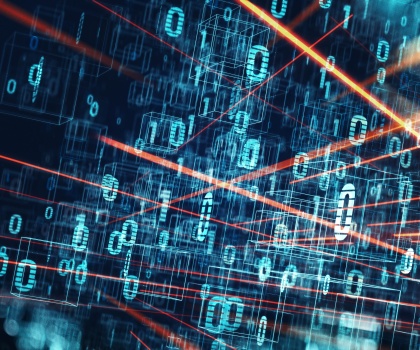Top 6 Security Challenges for CISOs in 2024
What to expect for these emerging trends
In the ever-evolving landscape of cybersecurity, staying ahead of the curve is not just a goal; it's a mandate. As we approach 2024, the digital frontier becomes more complex and dynamic, demanding heightened vigilance from Chief Information Security Officers (CISOs). In this era of relentless technological innovation, it's crucial for CISOs to not only anticipate but proactively address emerging threats.
Buckle up for a transformative year ahead as we unravel six cybersecurity trends set to reshape the very fabric of decision-making for CISOs in 2024. From quantum leaps in technology to the intricacies of supply chain vulnerabilities, this is a summary for those at the helm of safeguarding digital fortresses against an ever-expanding array of threats.
Quantum Computing Puts Encryption to the Test: The advent of quantum computing presents a double-edged sword for CISOs. While it holds the potential to revolutionize technology, it also poses a serious threat to traditional encryption methods. CISOs must brace themselves to fortify their digital defenses against the looming quantum era, reevaluating cryptographic protocols and exploring quantum-resistant solutions to stay one step ahead of cyber adversaries. Keep a lookout for more on how Symantec’s innovation team is keeping on top of these developments.
Zero Trust and Data Protection Integration: Zero Trust remains a cornerstone for CISOs seeking a comprehensive security paradigm. Embracing the ongoing cultural shift required for Zero Trust adoption becomes crucial. CISOs must not only focus on access control but also integrate Data Loss Prevention (DLP) into the strategy. Technologies like ZTNA, SWG, CASB, and Email make it crucial to extend data protection strategies across diverse platforms, ensuring security regardless of data location. Symantec stressess Data Loss Prevention in these controls to extend robust data protection across diverse resources. Our comprehensive approach ensures consistent detection and response, enabling seamless integration into CISOs' overall Zero Trust strategy for organization-wide security. Learn more.
- Ransomware’s Unyielding Threat Activity: Ransomware continues to haunt CISOs, leveraging 'Living off the Land' (LOTL) attacks that exploit legitimate executables. The challenge of LOTL attacks lies in distinguishing between legitimate and malicious activities. The defender's delicate balance lies in an adaptive protection solution, offering a way to thwart ransomware without disrupting user experiences. CISOs must grapple with evolving tactics, such as LOTL, emphasizing the need for vigilance in the face of persistent threats. Symantec has solved this problem through the use of what we call Adaptive Protection.
- Cost-Driven Security Decision-Making Raises Concerns: The paradox of cost-driven security decisions, particularly an over-reliance on a limited toolset, will become more pronounced. Economic uncertainty in the coming year is likely to have an impact on security budgets and drive product consolidation. Attackers will be poised to take advantage. Meanwhile, CISOs must navigate the tension between cost savings and cybersecurity. The challenge lies in breaking away from the cycle of reactive security measures and urging corporate leaders to prioritize proactive solutions that don’t compromise the organization’s security posture. Among those solutions is Symantec’s cross-control security portfolio which includes its full-feature Endpoint offering that provides a deep security stack to protect and defend against today’s emerging threats.
Battling Supply-Chain Vulnerabilities: Supply chain attacks remain a persistent concern, with an extensive reliance on third-party providers for an organization's codebase. CISOs must navigate the evolving threat landscape by implementing holistic strategies at various stages of the software’s lifecycle. While initiatives like Software Bill of Materials (SBOMs) show promise, experienced CISOs understand the need for ongoing efforts involving skilled personnel, self-improving processes, and targeted technology to defend against the complexities of software supply chain attacks.
Responsible Integration of AI and Chat GPT: The delicate balance between harnessing the efficiency and technological advancements of these tools while maintaining robust security measures poses a critical dilemma. CISOs must navigate the ethical considerations surrounding AI deployment, ensuring transparency, fairness, and accountability in automated decision-making processes. Striking this equilibrium will be essential to leverage the transformative potential of AI and Chat GPT while safeguarding against potential vulnerabilities and ensuring the trustworthiness of these technologies in the evolving threat landscape. Read about how Symantec enables Secure Adoption of Gen AI Apps.
In the face of these challenges, CISOs must adopt a proactive and adaptive stance, embracing innovation while shoring up the foundational elements of cybersecurity. By anticipating and strategizing for these trends, they can not only navigate the complexities of 2024 but also lead their organizations to a more secure and resilient future.

Simplifying Cybersecurity Platform Complexity
Streamlining and simplifying SOC operations with unified events and schema








We encourage you to share your thoughts on your favorite social platform.